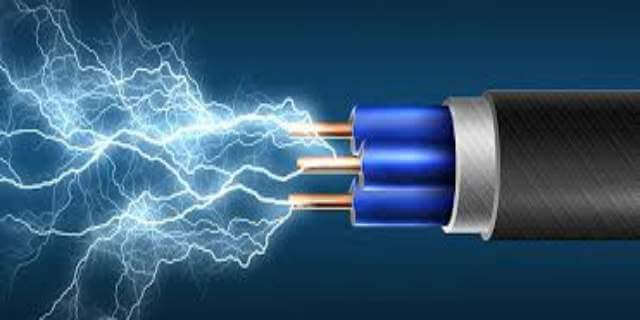If you have ever wondered whether microwave wattage input or output is more important, you are not alone. This is a common question among those who are looking to purchase a new microwave. While both wattage input and output are important factors to consider, there are other factors that you should keep in mind as well.
In this blog post, we will take a closer look at both microwave wattage input and output so that you can make an informed decision when purchasing your next microwave.
When it comes to microwave wattage, there is a lot of confusion about whether input or output is more important. The truth is, both are equally important. Here’s a look at why:
The wattage of a microwave oven indicates the maximum amount of power that the unit can use. The input wattage must be equal to or greater than the output wattage in order for the appliance to work properly. If the input wattage is too low, the appliance will not generate enough heat to cook food properly.
On the other hand, if the input wattage is too high, it could damage the unit.
The output wattage refers to the amount of power that is actually being used to cook food. This number will be lower than the input wattage because some of the power is lost as heat energy when it passes through the cooking chamber and metal walls of the oven.
So, which one should you pay more attention to? It really depends on your needs. If you want to make sure your food gets cooked evenly, then you’ll need to focus on having an oven with a higher output wattage.
However, if you’re worried about saving energy or avoiding damage to your appliance, then you’ll want to choose a unit with a lower input wattage.
Understanding Microwave Wattage
What Does the Wattage on a Microwave Mean?
The wattage of a microwave is the measure of how much power the microwave uses. The higher the wattage, the more powerful the microwave. Wattage is important when choosing a microwave because it determines how quickly the food will cook.
For example, a 1000-watt microwave will cook food faster than a 700-watt microwave.
How Can I Tell the Wattage of My Microwave?
If you’re not sure how many watts your microwave is, there are a few ways to find out. The first way is to check the owner’s manual that came with your microwave. The second way is to look for a sticker on the back or side of your microwave that lists its wattage.
And the third way is to use an online tool like the Microwave Wattage Calculator (http://www.microwavewattagecalculator.com/). To use the Microwave Wattage Calculator, simply enter the make and model of your microwave and it will calculate the wattage for you. You can also use this tool to find out the wattage of different models of microwaves so that you can make an informed decision when purchasing a new one.
So now that you know how to find out the wattage of your microwave, what does that number actually mean? Watts measures the amount of power something uses – so in this case, it’s a measure of how much power your microwave uses. The higher the wattage, the more powerful your microwave is and thus, the faster it can cook food.
However, keep in mind that microwaves with higher wattages will also use more electricity overall, so if energy efficiency is a concern for you then you may want to choose a lower-wattage model.
What is Input And Output Wattage?
In simple terms, input wattage is the power required by a device to operate, while output wattage is the power that the device produces. The wattage of a device is usually listed on its nameplate or in its manual. It’s important to know the difference between these two values because they’ll affect how much electricity your devices use.
For example, a light bulb with an input wattage of 100W will require more electricity to operate than one with an input wattage of 60W. Conversely, a light bulb with an output wattage of 100W will produce more light than one with an output wattage of 60W. When choosing new devices, it’s important to consider both the input and output wattages.
If you’re looking to save energy, choose devices with lower input wattages.

Credit: kitchengearoid.com
Input Vs Output Wattage
The wattage of an electrical device indicates the amount of power the device uses per second. The higher the wattage, the more power the device uses. The term “watt” is named after James Watt, a Scottish inventor who developed an early version of the steam engine.
Watts are important when choosing electrical devices because they help to determine how much electricity a device will use. For example, a 100-watt light bulb will use more electricity than a 60-watt light bulb. If you’re trying to save money on your electric bill, it’s important to choose devices with lower wattages.
Not all devices list their wattage, but you can usually find it in the product’s packaging or in its specifications online. When comparing two devices with different wattages, keep in mind that the difference between them may not be as big as you think. For example, a 100-watt light bulb uses only slightly more electricity than a 90-watt light bulb.
Input and output wattages are two terms that are often used together. The input wattage is the amount of power that a device uses to operate. The output wattage is the amount of power that a device produces.
For example, a coffee maker might have an input wattage of 1000 watts and an output wattage of 200 watts. This means that it takes 1000 watts of power to run the coffee maker, but it only produces 200 watts of coffee.
Microwave Input
When it comes to microwave input, there are two main types: digital and analog. Both have their own advantages and disadvantages, so it’s important to choose the right one for your needs.
Digital microwave input is the most common type.
It’s easy to use and provides a clear signal. However, it can be susceptible to interference from other electronic devices.
Analog microwave input is less common, but it’s more resistant to interference.
It also provides a more natural sound quality. However, it can be harder to use and may not work with all types of microwaves.
600W Microwave Input Power
When it comes to microwaves, the input power is one of the most important factors to consider. This is because the input power determines how much microwave energy is actually being used. The higher the input power, the more energy is being used and the faster your food will cook.
For most people, a 600W microwave should be more than enough to get the job done. However, if you are looking to use a microwave for commercial purposes or you have a large family, you may want to consider something with higher input power.
Conclusion
The microwave is one of the most important appliances in any kitchen. It can be used to cook food, reheat leftovers, or even defrost frozen food. But how does a microwave work?
And what is the difference between microwave wattage input and output?
Microwave wattage input refers to the amount of power that the appliance uses. The higher the wattage, the faster the appliance will heat up your food.
Microwave wattage output, on the other hand, refers to the amount of power that is emitted from the appliance. This power is what actually cooks your food.
So, which is more important: microwave wattage input or output?
The answer depends on how you plan to use your microwave. If you only plan to use it for simple tasks like reheating coffee or defrosting frozen food, then you won’t need a high-powered appliance. However, if you want to use your microwave for cooking meals, then you’ll need an appliance with a higher wattage output.

Asma Sheikh is a food and recipe blogger who loves to cook and bake. Her blog, “Kitchen Crunch”, is all about sharing her recipes with the world. Asma has been cooking and baking since she was a little girl, and she loves to share her passion with others. She believes that anyone can cook, no matter their skill level, and she enjoys helping others to learn new techniques and recipes.

